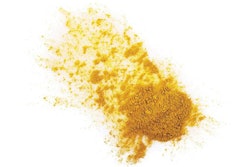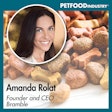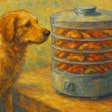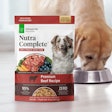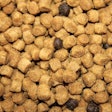
The gut is more than a place for digestion—it is a major point of contact for the immune system, stimulating correct responses for the control of pathogens from the environment that have been consumed. In dogs, their fondness for scavenging material can make them more vulnerable to exposure to disease-causing bacteria (which can then colonize the gut wall, leading to diarrhea and flatulence), but pets also love to go where their owners would prefer they don’t. There are now several products available that have been developed specifically to prevent these problems. One of these is mannan-oligosaccharides (MOS), which have well-proven responses at gut level when fed in the form of the more purified “mannose rich fractions” (MRF). Recently, a paper published in the Journal of Applied Animal Nutrition reviewed a combined 733 trials on commercial products Bio-Mos (MOS) and Actigen (MRF), including the benefits seen in companion animals (Connolly, 2015). This article looks at what those benefits entail for dogs, other pets and their owners.

Source: A. Yiannikouris et al., 2010. Provided courtesy Alltech.
A paper was recently published in the Journal of Applied Animal Nutrition reviewing 733 published trials on Bio-Mos, a mannan-oligosaccharide, and Actigen, a second-generation mannose rich fraction, on farm and companion animals.
The commercial form of feed-specific, purified MRF can be included in diets for dogs in order to convey such benefits for their health. As a nutritional supplement, MRF offers a natural approach to support the microflora and thus improve overall health, well-being and longevity. The product works on various levels in the gut of mammals. During pregnancy, it is important for promoting the transfer of essential immune compounds, immunoglobulins, into the milk. Early immunity in newborn puppies is essential to their health and wellbeing, until they are old enough to form their own natural immune defenses. In addition, it has been shown that vaccination efficacy is better when the animal has been fed MRF, as the immune system is in a better shape to assimilate the vaccine.
A number of trials have been carried out to explore the efficacy of MRF in improving gut health in dogs. Many common pathogens can affect dogs, leading, most commonly, to diarrhea. The combined research on both MOS and MRF has shown reduced fecal E. coli (which causes many gut upsets; see Figure 1) and Clostridium perfringens (a severe pathogen that can erode the gut wall and also increase flatulence, as it is a gas producer) and the promotion of greater concentrations of beneficial Lactobacilli and Bifidobacteria spp. (Stricklinget al., 2000; Swansonet al., 2002a; Grieshopet al., 2004; Gouveiaet al., 2006). These bacterial types are associated with improved digestion of nutrients and can contribute to energy and vitamin production.
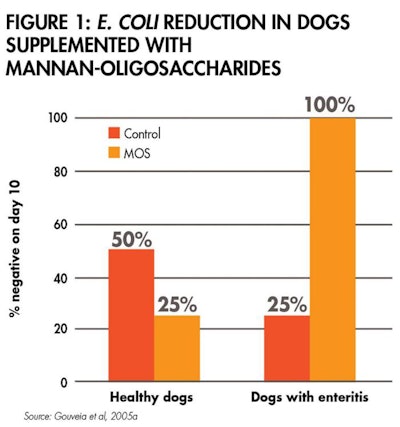
This figure shows the percentage of dogs positive for E. coli on days one and five of testing, which were negative on day 10. Those dogs supplemented with MOS showed a 100% negative rate for E. coli by day 10.
Older dogs tend to have reduced concentrations of Bifidobacteria spp. (Grieshopet al., 2004), although asignificant increase was noted with Bio-Mos supplementation in diets for senior dogs, thus counteracting the negative effects of age on colonic health (Grieshopet al., 2004).
MRF has an effect on intestinal morphology as well as immune system components, which may help to explain the observed reductions in C. perfringens, which lacks the fimbriae extensions in its surface which typically bind other pathogens to MOS and MRF. It is well known that feeding MOS leads to well maintained gut wall, with no erosion, damage or uneven villi (see Figure 2).

A damaged, uneven and eroded villi gut surface (left) occurs when exposed to poor gut environments, encouraging pathogens and restricting nutrient uptake, unlike even, correct villi (right) seen in animals fed MOS.
Research data from various trials conducted mainly in the United States show an increase in lymphocytes and lower plasma neutrophils—important immune cells circulating in the blood—when adult dogs were supplemented with MOS and fructooligosaccharides. Such improvements in immunity give rise to increased protection against intestinal pathogens (Swansonet al., 2002b). New research from Brazil with MRF shows that it increases humoral immunity (measured via circulating antibodies) in disease-challenged dogs. Other areas of interest to dog owners are the effect of MOS and MRF on nutrient digestibility and stool quality, both for health and practical (poop-a-scoop) reasons (Zenteket al., 2002; Kappelet al., 2004).Increased digestion and uptake of nutrients comes from the reduced competition with pathogenic bacteria for these nutrients, allowing dogs which may be poor digesters to increase body weight, performance and improve their appearance.
From this comparison of research in dogs, it appears that MOS and MRF both have a role in many “life stage” pet foods. In breeding bitches and for puppies, the ability to stimulate the immune system, whether for transfer into milk or developing correct immunity and responses to vaccination, is easily appreciated. For older dogs or in breeds which typically have poor gut function, the ability to maintain the correct balance of beneficial bacteria in the gut will assist in various roles as well as preventing digestive upsets, such as uptake of nutrients.
The choice of a MOS product or MRF is made by the manufacturer, but while most of the current published trials were with MOS, the advantages represented by MRF are that it is more concentrated and is quantifiably measurable in the food. Under most jurisdictions, this means that manufacturers can claim their pet food has been formulated using such products and detailing the benefits to the dog owner.
Bio-Mos and Actigen: effects on companion animals
A review of 733 published trials on Bio-Mos, a mannan-oligosaccharide, and Actigen, a second-generation mannose rich fraction, on farm and companion animals
More on companion animal health and nutrition




